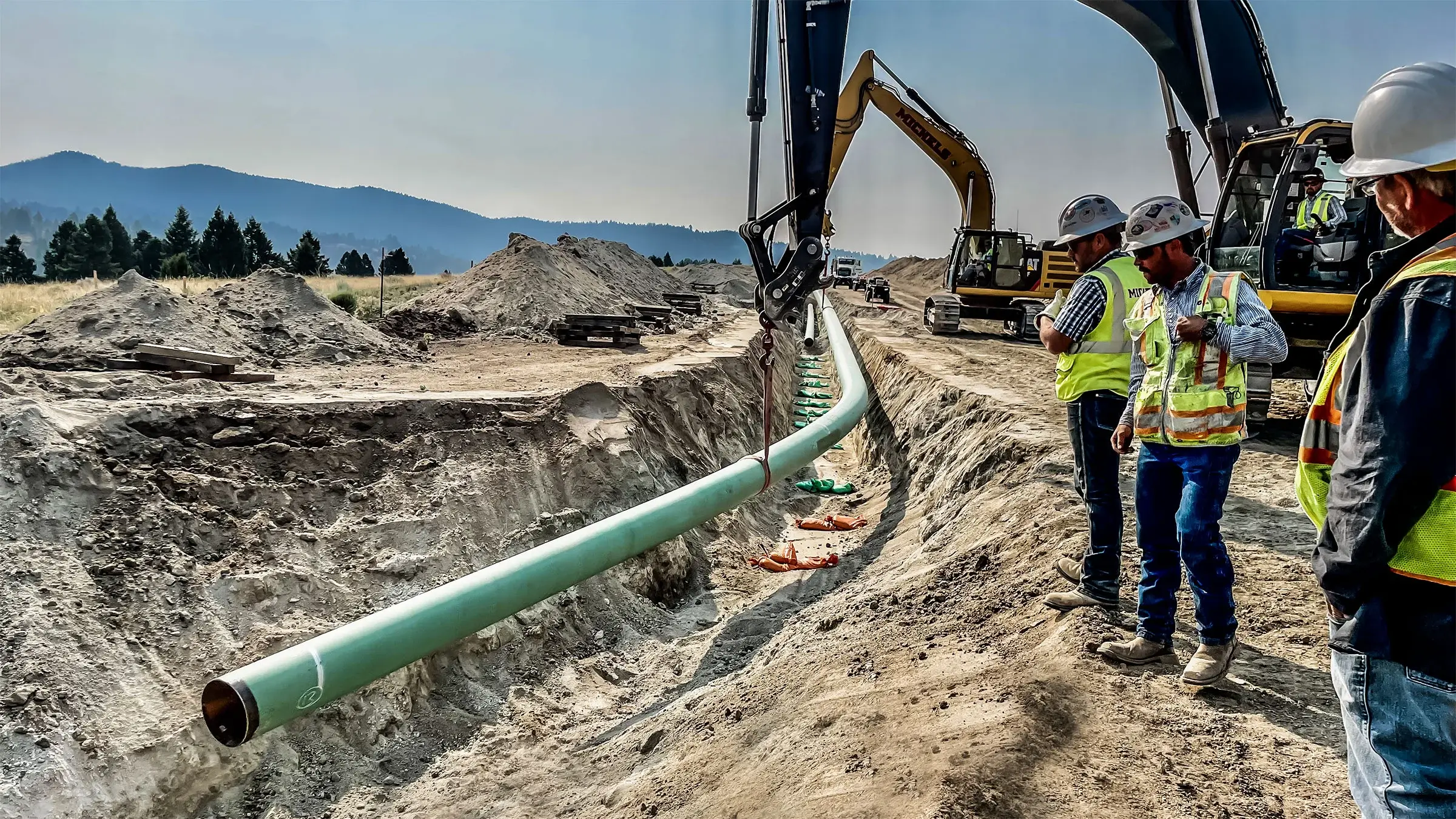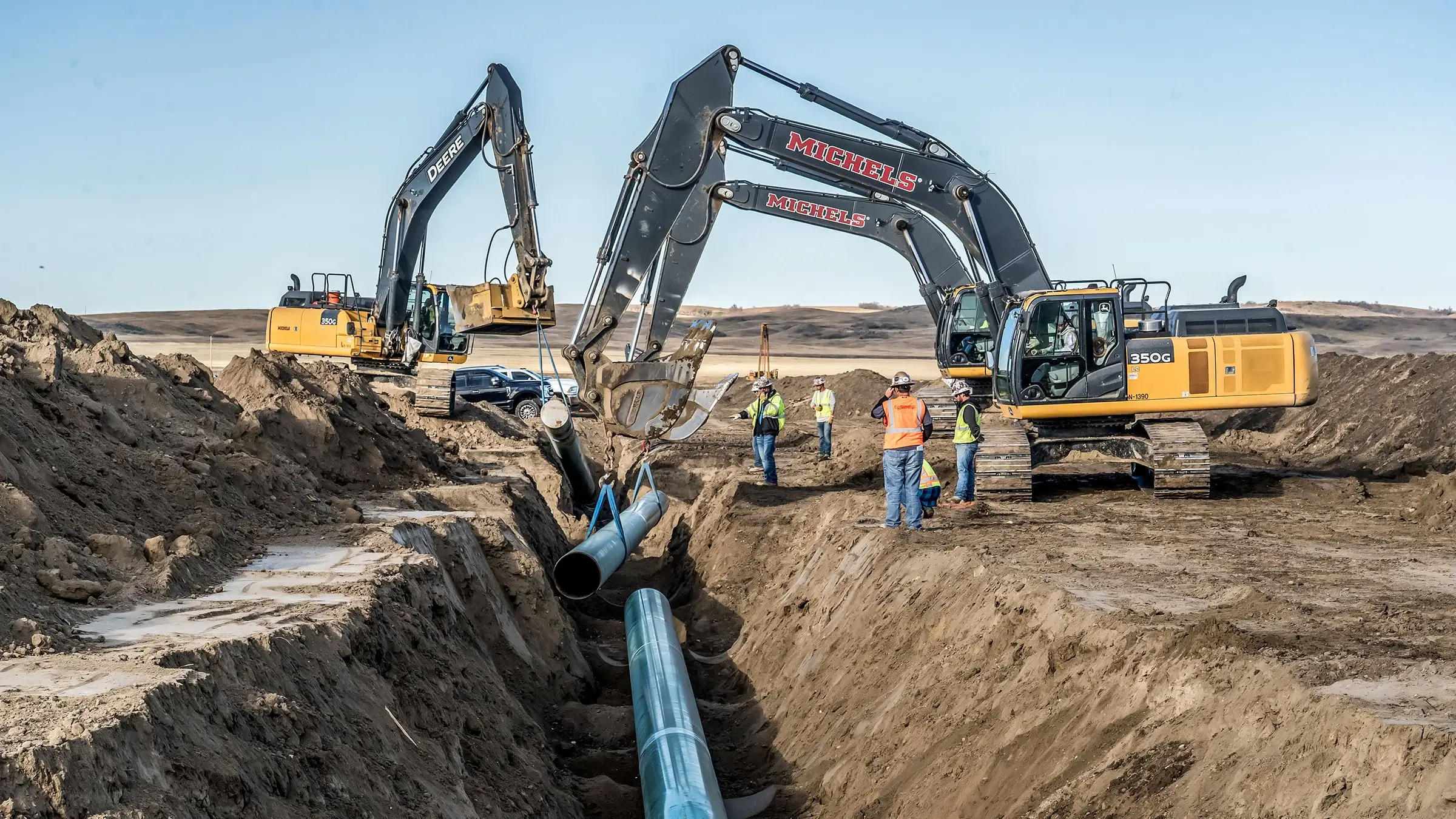The Importance of Long-Term Performance With Creek Pipe HDPE installation
A Deep Dive Into Pipes Installation: Essential Elements and Factors To Consider for Effective Projects
Effective pipe installation is a vital facet of design jobs. It includes a range of factors, from product selection to specific sizing and style. Each decision can significantly influence the system's performance and longevity. Recognizing these parts is important for avoiding expensive blunders. Creek Pipe trenching services. As teams browse via the intricacies of installation, several key factors to consider emerge that warrant attention. What are the essential elements that can make or damage a piping job?
Understanding Pipe Materials and Their Applications
When selecting pipe products, one need to think about the specific applications and ecological conditions they will certainly face. Various materials supply distinct properties that satisfy various needs. PVC is lightweight and immune to rust, making it excellent for water circulation systems. On the other hand, steel pipelines supply stamina and resilience, suitable for high-pressure applications but may need protective finishes to avoid rust.Copper pipelines are preferred for pipes because of their antimicrobial buildings and simplicity of installation, while polyethylene is usually utilized in below ground applications as a result of its adaptability and resistance to cracking.The option of material also depends upon temperature extremes, chemical exposure, and installation place. For high-temperature applications, products like CPVC or PEX can be useful. Eventually, comprehending the features and constraints of each material help in making educated choices that improve system effectiveness and longevity.
Relevance of Proper Sizing and Style
Proper sizing and style of pipelines are vital for ensuring perfect flow rates and minimizing stress loss. These elements likewise play a substantial role in establishing the compatibility of materials utilized in the installation. A systematic approach to sizing and design can significantly improve the effectiveness and longevity of a piping system.
Effect on Flow Prices
Flow rates in piping systems are critically affected by the sizing and style of the pipelines. Appropriately sized pipelines guarantee that the fluid can relocate effectively, minimizing disturbance and taking full advantage of circulation ability. Oversized pipelines can bring about reduced flow velocities, while undersized pipes may limit flow, resulting in raised rubbing and potential blockages. The style should also take into consideration aspects such as pipe material, internal surface level of smoothness, and format, as these contribute to the general performance of fluid transport. Furthermore, the arrangement of fittings and links within the system can affect flow prices. As a result, thorough attention to pipe sizing and design is necessary for optimizing circulation efficiency in any kind of piping installation job.
Stress Loss Considerations

Just how can push loss significantly influence the efficiency of a piping system? Stress loss is a critical element that can significantly diminish the efficiency of liquid transportation systems. When pipelines are poorly sized or designed, too much stress loss may occur, leading to decreased circulation prices and raised energy intake. This inefficiency can result in higher operational expenses and possible system failures. Proper sizing and design are important to reduce pressure loss, making certain that fluid dynamics stay suitable throughout the system. Designers should very carefully take into consideration aspects such as pipe diameter, size, and material to attain an effective equilibrium. Eventually, attending to pressure loss during the design phase can improve integrity and durability, making it essential for effective piping projects.
Material Compatibility Aspects
Pressure loss is not the only variable that can affect the performance of a piping system; material compatibility additionally plays a considerable function in overall performance. Guaranteeing that the products used in a piping system are compatible with the fluids they will deliver is necessary. Different materials can respond negatively to various chemicals, resulting in rust, deterioration, or contamination. This can eventually compromise the integrity of the system and impact its long life. In addition, appropriate sizing and layout are crucial to accommodate thermal growth and contraction, which can even more influence material efficiency. Evaluating elements such as temperature, pressure, and chemical composition is important in selecting suitable products, therefore improving system reliability and lowering maintenance prices in the long term.
Strategies for Accurate Pipe Installation
Precise pipe installation is essential for guaranteeing system efficiency and longevity. Several strategies can enhance the precision of this process. Initially, careful measurement is crucial; installers must utilize top quality devices such as laser degrees and measuring tape to establish the specific sizes and angles called for. Next off, appropriate pipe reducing strategies, like utilizing a pipeline cutter instead of a hacksaw, assurance clean sides that facilitate far better links. In addition, the use of positioning devices, such as pipe jigs, can notably enhance accuracy throughout assembly. It is additionally suggested to consider thermal growth; enabling appropriate spacing and expansion joints can avoid future misalignments. The installation team should comply with manufacturer guidelines to adhere to specific recommendations associated to each pipe kind. By applying these methods, the possibility of leakages and system failings lowers, eventually adding to a much more trustworthy piping system.
Guaranteeing Pipe Placement and Assistance
Proper positioning and assistance are crucial to the honesty and performance of any type of piping system. Misalignment can cause increased tension on joints, prospective leakages, and lowered efficiency. To ensure proper alignment, it is vital to use appropriate devices such as laser degrees and alignment determines. These instruments help attain exact positioning, guaranteeing that pipelines are set up according to style specifications.Support systems should be created to accommodate thermal growth and tightening, as well as the weight of the pipes and their contents. Choosing the best kind of supports, wall mounts, and brackets is vital. Each should be installed at defined periods to stop sagging or undue tension on the pipelines. Regular inspections adhering to installation can help recognize any imbalances or indications of insufficient assistance. By focusing on positioning and assistance, one can substantially improve the durability and performance of the piping system.
Usual Installation Errors to Avoid

Evaluating and Evaluation for Quality Control
Although the installation process might appear total, thorough testing and examination are vital to guaranteeing the lasting reliability of a piping system. Different approaches are employed to evaluate the honesty of the installation, consisting of pressure tests, visual evaluations, and non-destructive testing (NDT) methods. Stress tests validate that the system can endure functional problems without leaks, while aesthetic inspections aid identify any visible problems in the pipelines or joints. NDT approaches, such as ultrasonic or radiographic screening, give insights right into the product honesty without endangering the system.Additionally, documenting the testing results is crucial for future recommendation and conformity with sector criteria. This documentation serves not just as a quality control step however likewise as a lawful secure. Inevitably, a comprehensive testing and inspection method contributes to the general safety and security and efficiency of the piping system, guaranteeing it fulfills the needed efficiency standards in time.
Upkeep Tips for Long-lasting Pipe Solutions
Maintaining a pipe system requires routine inspections and keeping an eye on to determine possible concerns prior to they intensify. Executing reliable cleansing techniques is also essential for protecting against build-up that can impede efficiency. With each other, these techniques add to the long life and dependability of the piping facilities.
Normal Inspections and Tracking
Regular examinations and tracking are vital for making sure the longevity and effectiveness of pipe systems. Routine analyses can aid determine potential problems such as leakages, deterioration, or clogs before they escalate into significant problems. Implementing a timetable for regular evaluations permits for the early detection of wear and tear, allowing prompt fixings. Tracking pressure degrees and circulation rates can likewise offer useful insights into system efficiency, ensuring that any anomalies are attended to quickly. In addition, using innovative modern technologies, such as infrared cams or ultrasonic testing, can boost the examination process by giving thorough information regarding pipe conditions. Ultimately, consistent surveillance and assessments add to the reliability and durability of pipe systems, lowering YOURURL.com the threat of pricey repairs and downtime.

Efficient Cleaning Strategies
Efficient cleansing techniques are necessary for preserving the integrity and functionality of pipe systems. Frequently arranged maintenance, such as flushing systems with water, helps get rid of debris and buildup. For even more persistent obstructions, experts often recommend hydro jetting, which utilizes high-pressure water to tidy pipe insides completely. Chemical cleansers can additionally be made use of yet need to be selected very carefully to avoid damaging pipelines. In enhancement, utilizing devices like pipe electronic cameras can assist in determining trouble locations and making sure reliable cleansing. Keeping proper drain and preventing the disposal of dangerous compounds down pipelines even more add to durability. In general, regular cleansing techniques not only enhance Resources efficiency but additionally lower the threat of costly repairs in the future.
Regularly Asked Questions
What Are the Labor Expenses Connected With Pipe Installation Projects?
Labor expenses for pipe installation jobs vary extensively, influenced by elements like task intricacy, local wage rates, and called for skills (Creek Pipe Midland). Generally, these expenses can vary from $50 to $100 per hour, depending on the workforce involved
Exactly How Do Regional Regulations Affect Pipe Installation Practices?
Local policies greatly affect pipe installation techniques by developing security requirements, material requirements, and installation techniques. Compliance with these regulations warranties job safety and security, environmental management, and adherence to neighborhood codes, ultimately affecting total project success and costs.
What Devices Are Essential for Pipe Installation?
Necessary tools for pipe installation consist of monkey wrench, cutters, and installations. In addition, sealants, measuring tapes, and levels guarantee precision and longevity. Appropriate devices promotes performance and adherence to safety criteria throughout the installation procedure.
Exactly How Can Weather Conditions Influence the Installation Refine?
Weather problems substantially affect the installation procedure, as severe temperatures, rainfall, or wind can affect product integrity, worker safety, and task timelines. Proper planning and scheduling are vital to reduce these potential difficulties during installation.
Are There Warranties for Installed Pipe Solutions?
Warranties for installed pipe systems pipeline leak detection system often differ by maker and installation contractor. Usually, they cover issues and workmanship for a given period, guaranteeing the system's reliability and offering assurance to the homeowner.